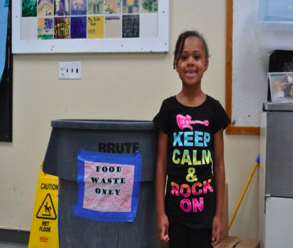SACRAMENTO—State Superintendent of Public Instruction Tom Torlakson said the state is one step closer to implementing the California Next Generation Science Standards(CA NGSS) as the State Board of Education today adopted a new plan.“This plan lays out what the state, districts, and the community can do to ensure that the exciting new science standards are implemented smoothly,” said Torlakson. “These standards will provide all students with a deeper understanding of science so they are better prepared for college and careers, including jobs in the high-technology fields,” said Torlakson.The NGSS Systems Implementation Plan for California offers school districts and the community strategies on how to provide educators training and resources to teach the new standards. The plan helps districts align local testing to improve teaching and learning. There are also tips on improving communication; how to get everyone to work together; and using the new standards in before and after school programs.The CA NGSS moves away from teaching science by rote memorization in a single subject matter, and now teaches students how to use analytical skills learned in several subject matters to understand the world around them. For example, CA NGSS integrates engineering and technology practices to help students understand science and the natural world. The CA NGSS also connects students with the Common Core State Standards, which teach them 21st century skills needed for college and careers.Science, technology, engineering, and mathematics (STEM)-related industries are major drivers of California's economy. A 2011 U.S. Department of Commerce study found that over the last decade, growth in STEM jobs grew three times faster than other occupations, and will continue to outpace non-STEM jobs in the next decade.California was a lead partner in a national movement to develop the NGSS. The State Board of Education adopted them in 2013 to better prepare students for college and careers in STEM fields. The CA NGSS replaces the old science standards last adopted in 1998.
Now on to all of the great hands-on project based STEM learning activities that the expanded learning program practitioners are engaging students in around Region 3.
Service Center
For more information on this S.T.E.M. activity please contact Kae Saeteurn at kae@sccsc.org
Name of Out-of-School-Time Provider: Sacramento Chinese Community
Name of District: Sacramento City Unified School District
School Site: Caroline Wenzel Elementary School
Grade Level of Activity: 5th Grade
Number of students who took part in the activity: 20
Type of Activity: S.T.E.M. - Building Your Own Marshmallow Catapult
Learning Outcomes- Students were able to:
- Describe how force affects the motion of a projectile
- Discuss the uses of catapults in industry and connections to engineering
- Explain and compare the meanings of accuracy and precision
- Explain the optimum angle (45 degrees) for launching a projectile the farthest distance
- Explain and demonstrate higher-level thinking of how to construct a catapult with different materials
- Collaborate with a partner to solve problems, design, build, and test the mechanism
 |
| SCCSC Expanded Learning Program Staff checking for understanding. |
 |
| SCCSC Expanded Learning Program student showing off their catapult. |
 |
| Another SCCSC Expanded Learning Program student proudly showing off his catapult. |
For more information on this S.T.E.M. activity please contact Kae Saeteurn at kae@sccsc.org
Name of Out-of-School-Time Provider: Sacramento Chinese Community
Service Center
Name of District: Sacramento City Unified School District
School Site: A.M. Winn Waldorf-Inspired K-8 School
Grade Level of Activity: K-8th
Number of students who took part in the activity: 113
Type of Activity: School to Fuel Program: The School to Fuel Program of Breathe California of Sacramento (BREATHE) aims to improve our local air quality by working with schools to collect cafeteria food waste and transport that waste to a local biodigester for conversion into clean fuel and electricity. The afterschool program staff, headed by Monik Vega, piloted School to Fuel with amazing success. School to Fuel now seeks to roll-out site-wide to collect more food waste, but student and staff participation is key for continued success!
Learning Outcomes- Students were able to:
 |
| An SCCSC student taking part in a BREATHE activity. |
 |
| SCCSC displaying their messy gloves during a BREATHE activity.
Name of Out-of-School-Time Provider: Sacramento Chinese Community
Name of District: Sacramento City Unified School District
School Site: Nicholas Elementary
Grade Level of Activity: 3rd
Number of students who took part in the activity: 18
Type of Activity: Foil Boats
Learning Outcomes- Students were able to:
|
 | ||||||||||
Another group of SCCSC students testing the design of their foil boat.
|







No comments:
Post a Comment